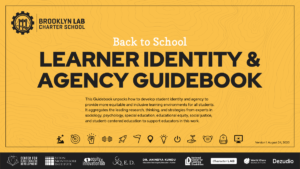4 Concentration Activities for Students

By Riya Sander
Keeping students engaged through an entire day of classes is a struggle many educators face.
When students are not paying attention to class lessons, we may automatically jump to the conclusion that they are lazy or are otherwise being disobedient. But a lack of concentration can actually occur for several reasons.
- One of the most common reasons a student lacks concentration or focus is because they did not get enough sleep the night before. We see this in students of all ages. If their schedules are too busy or they’re not getting restful sleep at night, they may struggle to focus on classroom lessons.
- The environment at the student’s home may also contribute to their inability to concentrate. If there is serious family stress, such as illness or arguments at home, they may prohibit the student from really paying attention in class. Their mind may be elsewhere, worrying about what is going on back at home instead of focusing on the lessons of the day.
- Poor nutrition or medications can also contribute to a child’s lack of concentration. If students are not eating proper meals, they are unable to get the vitamins and minerals they need to feel alert, focused and healthy. This is especially true if students are not given breakfast in the morning. Certain medications can also cause students to feel tired or lethargic.
Regardless of a student’s reasons for loss of concentration, there are a few things you can do to bring back their focus and get them excited about learning. If you’re struggling with student concentration in your classroom, here are a few classroom activities to help get them participating.
1. “Beat the Clock”
With the game “Beat the Clock,” you set a predetermined amount of time for your students to get something done. When they see that the end of their focus period is near, they can push through until the very end.
To play “Beat the Clock,” give your students a task they need to complete. This may be a worksheet, a single problem, or an activity. Then set the timer for a few minutes. A good rule of thumb is to set the timer for one minute for how many years old they are. So if the student is seven-years-old, they should be able to focus on one task for seven minutes.
While the timer is going, they should focus only on completing the task at hand. Be sure that the tasks you are assigning will take almost the entire time to complete. This will keep them focused for the entire length of time and you do not need to worry about them having too much idle time.
2. Use Puzzles
Puzzles are a great way to get kids thinking. Because puzzles often feel like a game, students are interested in solving them and discovering the solution, but they don’t necessarily feel like they are learning.
Puzzles, such as the serpent cube solution, can be a great way to give kids a break from lectures without losing their focus. If you’re in the middle of a class period and students look as if they’re losing concentration, a puzzle can give them a fun break to help them refresh.
Puzzles can also be used to get the classroom going in the morning. As an activity that causes them to think outside of the box and engage with students around them, all while having fun, they can start their day with an exciting accomplishment.
3. Play Memory Games
If you’re wondering how to increase concentration while studying (and not just in class), memory games are a great resource. Memory games allow the student to keep their mind engaged without noticing how intently they are focusing, keeping them interested and concentrated even longer.
As they improve their memory through games, they can apply these ideas and processes to studying. With a better memory, studying will be easier and they will see more benefit from their time spent hitting the books.
Memory games can be found all over and for all ages. Children’s memory games can include simple card matching games or they can be found on computers or tablets.
4. Implement a Schedule
Schedules allow you to break down a full day or project into smaller, seemingly more manageable chunks. While each piece may be there regardless, using a schedule allows your students to clearly see what is coming next and when that time will come.
When you stick to a schedule, your students can feel more engaged and prepared as you shift gears. Knowing how long they should focus on each item allows them to give their mind a break when each segment is up. This can prevent them from feeling overwhelmed or as if they are tackling too much within their day.
Schedules can be beneficial both in and out of the classroom. When students are on a set routine, their mind can adjust to the proper amount of focus and concentration needed. With clear breaks factored into their schedule, they will know when to focus, when to rest and when it is time to get back to work.
Many teachers and education leaders wonder how to encourage students to participate, but when children aren’t engaging, it usually means there is an underlying problem at hand. When you understand the root of why your student is having trouble focusing in class, you can better help them restore concentration.
These four activities are great ways to get kids engaged in the classroom. When their lessons are clearly broken up into time-manageable chunks and the content is interesting, engaging and fun, students will stay focused throughout the day, learn more from your lessons and will be more prepared to apply that information to everyday life.
Try one or more of these focus-inducing activities in your classroom. You may be surprised at the results you see!
For more, see:
- 7 Ways to Maximize Student Engagement
- 3 Key Ways to Inspire Student Engagement and Motivation
- 6 Best Practices for Online Student Engagement
Riya Sander is a writer, content marketing strategist at SiamMandalay and former ESL teacher. Follow her on Twitter: @SanderRiya.
Stay in-the-know with all things EdTech and innovations in learning by signing up to receive the weekly Smart Update.





Habeeba
Useful information.